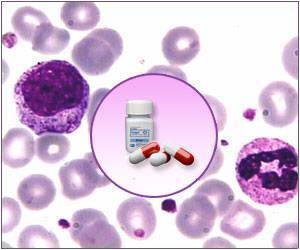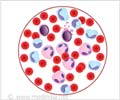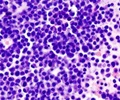Novel clinical biomarker helps to detect patients who respond well for leukemia treatment, reveals study.

‘Patients who respond for leukemia treatment can be detected with high accuracy by a new clinical biomarker.’





Acute myeloid leukemia (AML) is a cancer that leads to abnormal proliferation of white blood cells.The anti-cancer drug cytarabine provides the basis of chemotherapies directed against AML. Cytarabine needs to be activated in cancer cells by the addition of phosphate groups to exert its anti-cancer effects. Prof Jindrich Cinatl (Institut für Medizinische Virologie, Goethe-Universität, Acting Director: Prof Volkhard Kempf) investigated with his research group (funded by the Frankfurter Stiftung für krebskranke Kinder) cytarabine-resistant AML cells from the Resistant Cancer Cell Line (RCCL) collection that he runs together with Prof Martin Michaelis (University of Kent, Canterbury, UK).
Prof Cinatl discovered that the toxicity of cytarabine against AML cells correlates with the expression of the cellular enzyme SAMHD1, which enables to predict the sensitivity of AML cells to cytarabine.
Following this initial finding, a consortium led by Prof Cinatl together with Prof Oliver Keppler (who moved from the Institut für Medizinische Virologie, Goethe-Universität to Ludwig-Maximilians-Universität, München during the project) showed that SAMHD1 removes the phosphate residues from the active form of cytarabine and thereby reverses it into its inactive state.
In a cooperation with clinicians (led by Prof Hubert Serve, Medizinische Klinik II, Goethe-Universität) it was shown that SAMHD1 levels determined in leukaemia cells also enabled the prediction of the response of AML patients to cytarabine-based chemotherapies with high accuracy. This introduces SAMHD1 as clinical biomarker that can guide cytarabine-based chemotherapies only to such patients that are very likely to respond and spares patients who are unlikely to respond from toxic side effects.
Advertisement
Advertisement













